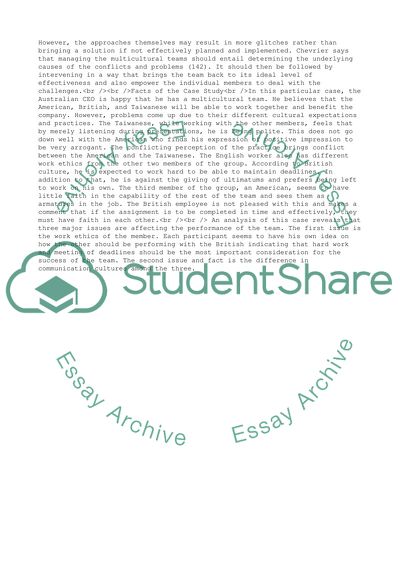Cite this document
(Cross Cultural Communication Case Study Example | Topics and Well Written Essays - 2162 words, n.d.)
Cross Cultural Communication Case Study Example | Topics and Well Written Essays - 2162 words. Retrieved from https://studentshare.org/management/1858670-complete-the-case-study-of-cross-cultural-communication-by-answering-the-questions-how-ever-providing-it-as-an-essay
Cross Cultural Communication Case Study Example | Topics and Well Written Essays - 2162 words. Retrieved from https://studentshare.org/management/1858670-complete-the-case-study-of-cross-cultural-communication-by-answering-the-questions-how-ever-providing-it-as-an-essay
(Cross Cultural Communication Case Study Example | Topics and Well Written Essays - 2162 Words)
Cross Cultural Communication Case Study Example | Topics and Well Written Essays - 2162 Words. https://studentshare.org/management/1858670-complete-the-case-study-of-cross-cultural-communication-by-answering-the-questions-how-ever-providing-it-as-an-essay.
Cross Cultural Communication Case Study Example | Topics and Well Written Essays - 2162 Words. https://studentshare.org/management/1858670-complete-the-case-study-of-cross-cultural-communication-by-answering-the-questions-how-ever-providing-it-as-an-essay.
“Cross Cultural Communication Case Study Example | Topics and Well Written Essays - 2162 Words”, n.d. https://studentshare.org/management/1858670-complete-the-case-study-of-cross-cultural-communication-by-answering-the-questions-how-ever-providing-it-as-an-essay.


